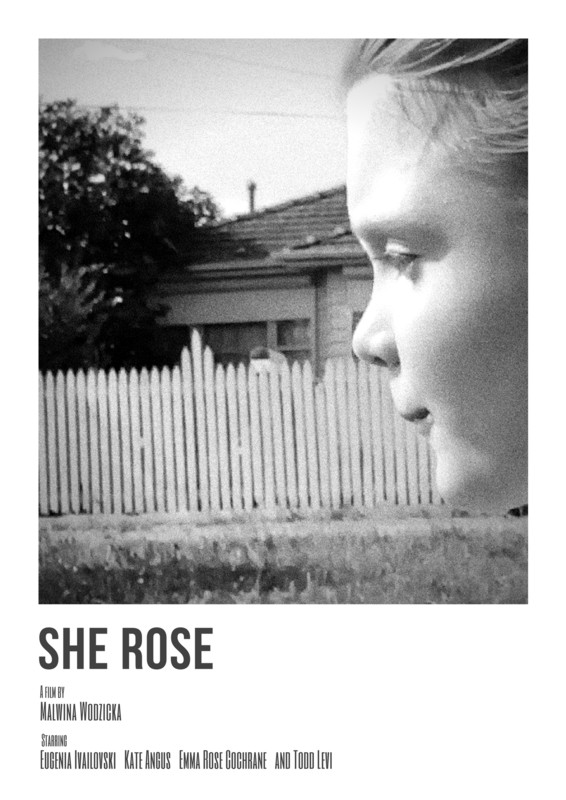Punching Above Her Weight
SHE ROSE
The story: A little girl is inspired by indigenous Australian boxer Lionel Rose to become a boxing champion herself. But first she has to conquer an unlikely opponent.
Status: MoMo Official Selection.

We talked to She Rose director Malwina Wodzicka about the making of her debut film.
What is the story behind your film? What were the steps which led you to make it?
I was working on Australian documentary, which had In Memoriam sequence of black and white photos of famous Australians, and one of those photos was Lionel Rose, with his hands in gloves in fighting pose. The director with whom I was working told me a bit about Rose, and then I just started to research more.
He was a first Indigenous Boxing Champion (after winning Tokyo fight, 1968). There is something about boxing that always appeals to me, I remember as a little girl watching Rocky and being completely taken away with this feeling of strength flowing through my body. Moreover, I was a teenage athlete myself and a Champion of my country in speed skating (at the age of 13, but after an accident, I couldn’t continue my sports career).
So after finding out about Lionel Rose my mind instantly went to the picture of a little boy, training to be great one day, but the question I kept asking was – What makes you not give up?
When we’re talking about Champions in any area we’re talking about people who were working for that success their entire lives, probably since they were very little. So what makes them keep going year after year when there are so many doubts and difficult moments. And the answer for me was childhood dreams – the sheer emotion that we felt as kids when we were thinking about our great futures.
It can’t be tainted; it can’t be just about fame or money. I don’t think that would be strong enough to keep you wake up every day and train. It has to be passion, it has to be pure.
Why did you choose a smartphone to film with.
At the time, when I’d decided to tell this story, I’d just moved to another country and I didn’t know anyone to assemble the crew I could trust. So, the reason I believed I still could make this film on my own was modern technology.
Smartphone allowed for the much simpler production process and considering I chose to be a director, cinematographer and an editor in one, it successfully helped to facilitate blending in all those responsibilities.
What equipment did you use?
Which smartphone?
iPhone SE
Mics, lights, gimbals?
All natural light, Rode Video Micro Microphone, ZHIYUN Smooth-q 3 axis Gimbal.
Did you shoot with FiLMiC pro?
Yes
Did you shoot with log or flat?
Log in colour and then graded into black and white look
What did you edit on – which software, which computer?
Premiere, MacBook Pro (2015).
How much did you know about filmmaking before you made this film?
I am an editor with 7 years experience in film/video content industry.
What did you like about filming with a phone? What were the downsides, if any?
Portability is the main reason I chose to work with this technology. However, there were some issues with focus. When you move rapidly sometimes, you see that you’re going in and out of focus, even if you previously locked it. But that might have been issue with my model (older, iPhone SE).
Has making the film changed your life in any way?
This film hasn’t changed my life, but it certainly helped me to gain more confidence as a filmmaker in general, and not only an editor.
How successful was the film, personally and in gaining an audience for your work.
Like probably every filmmaker, I hoped that people would understand the meaning of the film, but I have to admit it was surprising how well it was received all over the world. It won several festivals including SF3 in Sydney and was screened at the Sydney Opera House, which was a once in a lifetime experience.
All this also led me to create a network of filmmakers in Australia and helped with finding work opportunities.
Looking back on the movie, is there anything you’d have done differently?
I wouldn’t change anything. I think the end-result for SHE ROSE surpassed all of my expectations and came extremely close to the vision I’ve had in my mind.
How important are film festivals that give these kind of films a platform for you?
I think nowadays people too easily forget that the high production value should never trump good storytelling, and with your phone, you can sometimes tell much more compelling story than with all the expensive gear that preoccupies focus of many directors.
So I’m grateful for all the smartphone festivals to acknowledge that it doesn’t matter what you’re making your film with as long as you can move or interest people with the story.

Consider Supporting us on Patreon.
We have a limited offer! Be listed on our exclusive filmmaker network page and submit any films to our festival free.
Eager to learn more?
Join our weekly newsletter featuring inspiring stories, no-budget filmmaking tips and comprehensive equipment reviews to help you turn your film projects into reality!
Simon Horrocks
Simon Horrocks is a screenwriter & filmmaker. His debut feature THIRD CONTACT was shot on a consumer camcorder and premiered at the BFI IMAX in 2013. His shot-on-smartphones sci-fi series SILENT EYE featured on Amazon Prime. He now runs a popular Patreon page which offers online courses for beginners, customised tips and more: www.patreon.com/SilentEye


